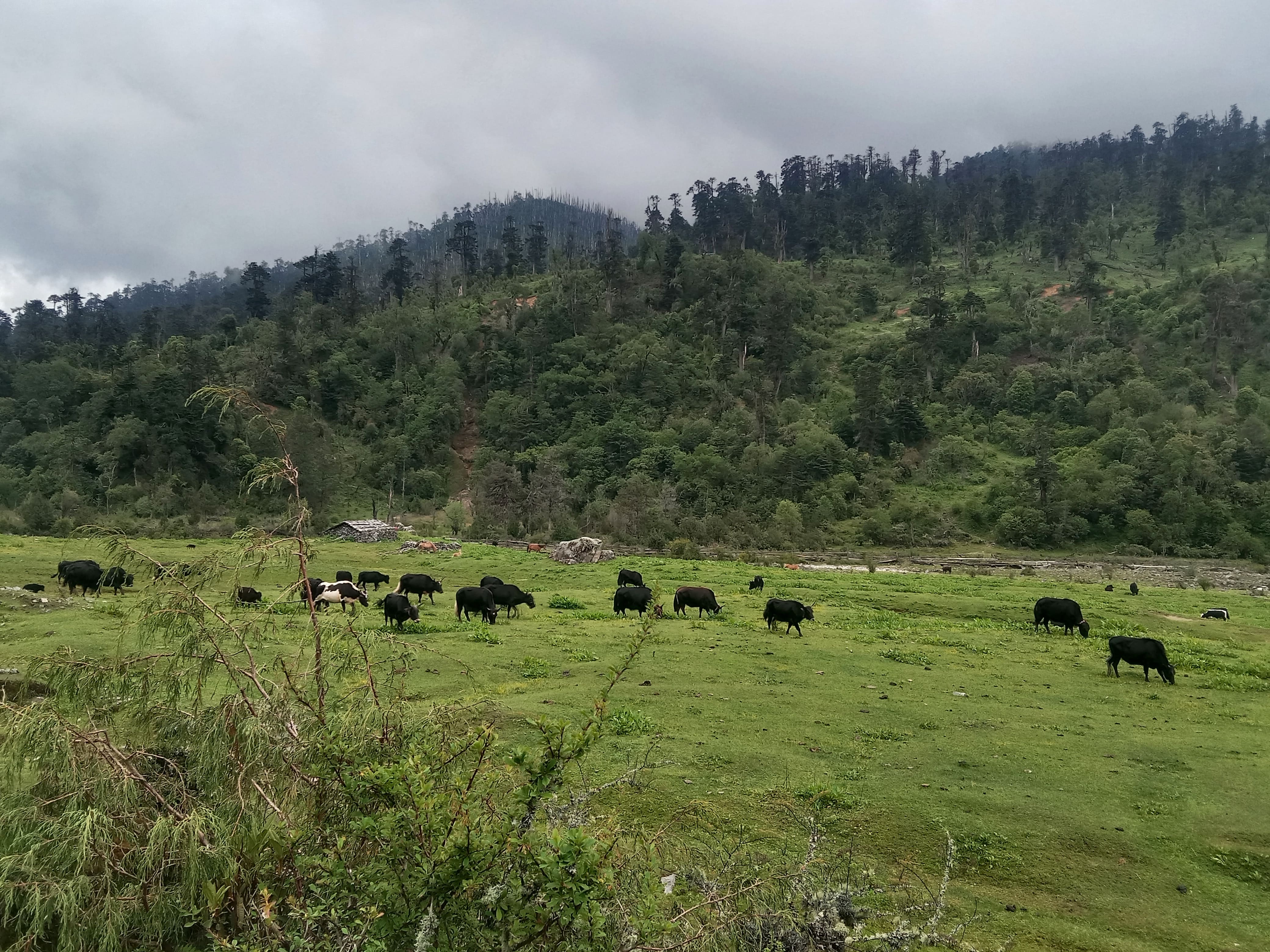GRAZING RESOURCES FOR YAKS IN MERAK AND SAKTENG: ISSUES AND CHALLENGES
Keywords:
Grazing resources, Merak, Rangeland, Sakteng, Yak, Zo, ZomAbstract
Rangelands, known as Tsamdro in Dzongkha (Official language of Bhutan), play a vital role in sustaining the livelihoods of semi-nomadic herders in Merak and Sakteng blocks, providing essential grazing resources for yaks and hybrids of Yak (zo and zom). Major forage species available in summer and winter grazing areas of Merak and Sakteng blocks were assessed. This study examines the current state of grazing resources, challenges faced by herders, and potential management strategies that could be implemented. Data was collected from 145 yak-rearing households using structured interviews and analyzed using SPSS. The findings reveal that herders primarily utilize open meadows in summer (95.86%) and open forests in winter (74.48%), following a transhumance system which is based on seasonal availability of fodder and water. The major grazing resources in summer and winter grazing area are identified. It was however found that the grazing resources are increasingly threatened by invasive plant species, overgrazing, and policy restrictions on pasture management practices such as controlled burning. Encroachment by non-palatable species, particularly Rhododendron arboretum, Juniperus recurva, Rumex nepalensis and Potentilla leuconata has degraded pastureland, reducing forage availability. The respondents reported that despite attempts to improve rangeland productivity through fencing and rotational grazing, herders continue to face shortages, especially in winter. The study highlight the need for sustainable rangeland management practices, including controlled burning, removal of invasive species, and rehabilitation of pasture, to ensure rangeland stability and livelihood sustainability.

Downloads
Published
Issue
Section
Categories
License
Copyright (c) 2025 BJAS

This work is licensed under a Creative Commons Attribution 4.0 International License.





